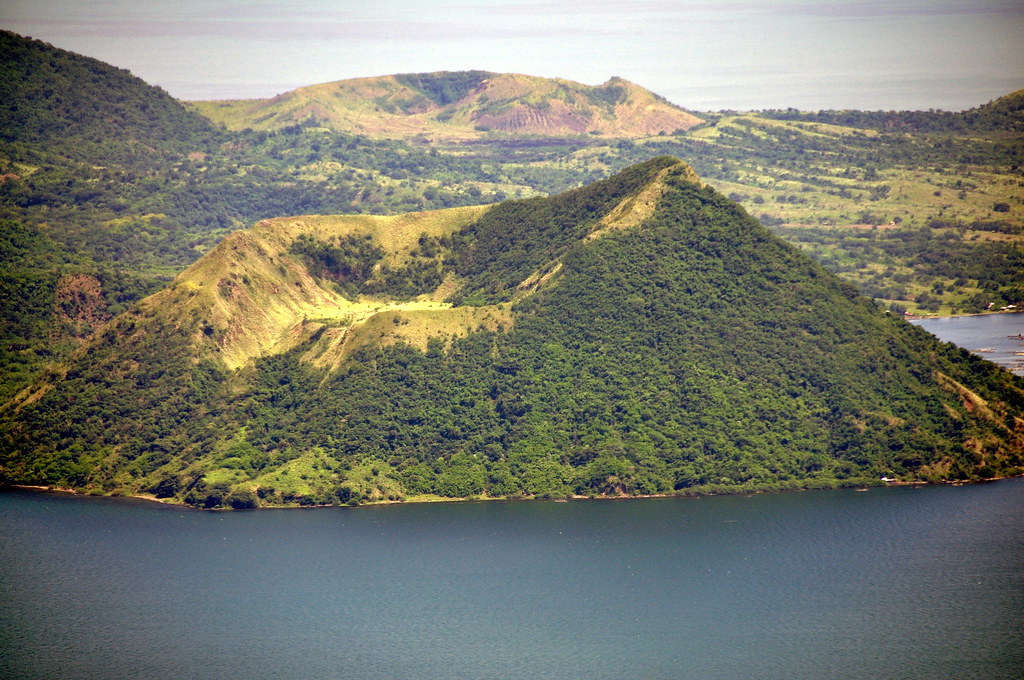Did you know that one of the most active volcanoes in the Philippines looks like a 'baby' in size? It's called Taal Volcano. But don’t be fooled by its small size.
Taal hides an immense potential for destruction behind the beauty of the lake that surrounds it, and it has a history of eruptions that have claimed thousands of lives. It is one of the most dangerous volcanoes in the world.
The Dangerous Little One

Taal Volcano lies about 70 kilometers south of Manila, the capital of the Philippines. With an elevation of only 311 meters, it’s often called one of the world’s smallest active volcanoes.
But in reality, Taal is far more than just a single peak with a single crater. It’s a complex volcano with multiple eruption points that have shifted over time.
Imagine a layered structure like a Russian matryoshka doll—the traditional wooden nesting dolls. At the center of the 234 square-kilometer Lake Taal lies Volcano Island, and within it is Crater Lake, which itself holds a tiny island.
This unique nested formation is not only geologically fascinating but also extremely hazardous—as it allows direct interaction between magma and water, a recipe for highly explosive eruptions.
A Terrifying Eruption History
Taal is no stranger to erupting. Over the past few centuries, it has had more than 30 recorded eruptions.
One of the deadliest occurred in 1911, killing more than 1,300 people and spewing vast amounts of volcanic material into the air. Its last major eruption took place in 1977, and ever since, Taal has been under close scientific monitoring.
What makes Taal especially frightening is its variety of eruption styles—ranging from lava fountains and ashfall, to ballistic projectiles and even volcanic tsunamis.
In fact, Taal is known as the first site where the base surge phenomenon—a horizontal blast of hot gas and ash caused by an explosive eruption—was observed and scientifically described.
Living in the Danger Zone
More than 450,000 people live within a 14-kilometer radius of Taal Volcano, and around 25 million—including those in the densely populated Metro Manila—are within 60 kilometers. Because of its high risk to surrounding populations, Taal has been designated a "Decade Volcano" by the international volcanology community.
Volcano Island itself has long been declared a Permanent Danger Zone by the Philippine Institute of Volcanology and Seismology (PHIVOLCS). Still, many people continue to live nearby. Why? One key reason is the extremely fertile volcanic soil, which supports agriculture and livelihoods.
Hazards from Water and Air

Taal Lake is not just a picturesque backdrop—it also plays a role in the volcano’s dangers.
Water from the lake can enter the volcano’s system and trigger phreatomagmatic eruptions—violent explosions caused by the interaction of magma and water, producing fine ash that can spread far and wide. This ash can damage crops, contaminate water supplies, harm electronics, and pose serious respiratory risks to both humans and animals.
If an eruption is large enough, tsunamis and seiches (lake waves caused by volcanic earthquakes or landslides into the water) may occur. For instance, the 1965 eruption created a 4.7-meter-high wave that reached 80 meters inland.
Technology Watching the Sleeping Giant
To monitor Taal’s activity, PHIVOLCS uses a range of instruments, including seismometers (to detect earthquakes), GPS and tiltmeters (to track ground deformation), infrasonic sensors (to detect low-frequency eruption sounds), and routine visual observations.
These tools allow scientists to detect changes in subsurface pressure, magma movement, and potential eruption signals with greater accuracy.
For example, in January 2019, GPS detected minor surface inflation, and increased seismic activity followed. PHIVOLCS raised the alert level to Level 1. As volcanic activity intensifies, the status can escalate up to Level 4, meaning an explosive eruption could occur within hours or days.
Taal and the Future
Though predicting eruptions remains difficult, experts agree that Taal is highly active and likely to erupt again. With its deadly history and complex structure—especially the interaction of magma and water—its threat should never be underestimated.
However, not everything about Taal is bleak or frightening. The volcano also reminds us of nature’s raw power, the importance of scientific knowledge, and how technology can save lives when used wisely.
By continuously monitoring, learning from the past, and staying prepared, we can face this “small” volcano with greater resilience and understanding.



















